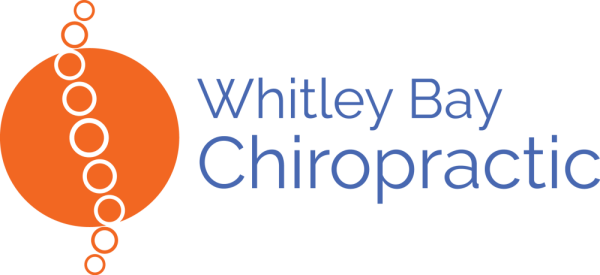Plantar Fasciopathy Workshop by Tom Feeney
Health care providers who use therapy and prescribe exercise, like Manual Therapy UK for more original content, and information on my workshops!
Plantar Fasciopathy (PF) and Achilles Tendinopathy (AT) workshops.
email me to book tjfdc@hotmail.com
Thursday 28 Jan 6 PM to 9:30 £45 at North Yorkshire Physiotherapy in Stokesley
- latest research on PF and AT
- mobilization of the arch of the foot
- manipulation of the talocrural joint
- exercise progression for PF and AT
- when and when not to give stretches
- hands-on myofascial slide release (not ART)!
Presenter bio: Myofascial Release Sports Chiro since 1997, working in Montreal, Philadelphia, and Newcastle upon Tyne. I’ve treated Olympic athletes, WWE wrestlers, NHL, NFL, and Premiership footballers. I’ve taught seminars on core training, movement assessment, and soft tissue work to hundreds of health care providers. I’ve written or contributed to health articles in numerous publications (see links at the bottom of the page).
Testimonials:
“The plantar fasciitis seminar was rewarding, as it’s really hands on. I appreciated that it’s research based and practice based as well.” Anne Carbonnel DC, Heaton
“Tom is a patient teacher who really knows the research behind therapy and sports injuries. You can implement his stuff immediately.” Russell Purchon DC, Hexham Family Chiropractic
Research- manual therapy for PF:
- The 2014 American Physical Therapy Association Guidelines for Plantar Fasciitis – found strong evidence that manual therapy, exercises, taping, and night splints were effective.
- Studies in 2014 and 2007 found myofascial release of the calf and plantar fascia more effective than just conventional therapy.
- 2015 study – Myofascial Release effective in treating PF.
- 2015 study – mob / manips are effective in increasing ankle dorsiflexion
- 2014 study compared deep calf massage plus stretching and neural mobilization to ultrasound therapy plus stretching. Massage / neural mobilization yielded much better results.
- 2011 study – trigger point therapy plus self-stretching resulted in superior short-term outcomes as compared to a self-stretching program alone.
Research- exercises and stretches:
- Cheung 2015-
Intrinsic foot muscle volume in experienced runners with and without chronic plantar fasciitis –
“There was significant greater rearfoot intrinsic muscle volume in healthy runners than runners with chronic plantar fasciitis “
- 2014 study –compared high load calf raise (video) (with Windlass mechanism -extended MTP joints) exercises to plantar specific stretching. The high load group had better results, check out the study for pictures.
- 2014 study – eccentric training for Achilles tendon insertion pain no better than conventional therapy.
- 2014 study -windlass stretch slightly more effective than myofascial release.
- Exercise should focus on the gastrocnemius in isolation and in combination with the soleus. A 2011 study found that the gastrocnemius is tight in 57% of PF cases, the gastroc /soleus in 26%, and 17% had normal ROM. Take away message, don’t forget the gastroc!
- A non-weight bearing plantar fascia stretching program may be more effective than standing calf stretches. An at-home frequent seated stretch is worth trying for PF sufferers.
- 2014 study – PNF stretching better than a control for increasing gastrocnemius flexibility. A recent study found foam rolling before static stretching to be better at increasing ROM, than foam rolling or stretching alone at the hip. Give it a try at the ankle.
- Where the flexor digitorum brevis attaches to the calcaneus is the most common site for heel spurs, not where the plantar fascia attaches.
- Strengthening the flexor digitorum brevis (FDB) and / or the flexor hallucis brevis may take some pressure off of the plantar fascia. The paper grip test (fig 4) is a good way to see if the FDB is weak.
Does prolonged standing cause PF?
Maybe!
A 2015 review of the literature of the topic found, “low-quality evidence of an association between PF and weight-bearing tasks such as walking and standing on hard surfaces”.
Putting it all together:
- evidence based myofascial slide release
- PNF stretching of the gastroc and soleus
- non-weight bearing static stretching
- high load isometric calf raises
- bare foot exercises
- calf lowering eccentrics (it may be better to do isotonics)
- flexor digitorum and flexor hallucis tests /exercises
- Foot tripod exercises are great to add when the patient is ready.
For more go to – Manual Therapy UK
Articles on soft tissue therapy I wrote or contributed to:
Telegraph Active Release Techniques for injuries
STACK New Age of Golf Training is Creating Stronger and More Athletic Golfers
Athletics Weekly Performance Therapy for Greg Rutherford
220 Triathlon Sports massage and ART differences
Vigour Magazine Sports Performance
Progenex ART for CrossFitters
FIT Institute Research based hamstring therapies
Titleist Performance Institute What Performance Therapy Looks Like For Top Golfers
Podcasts
